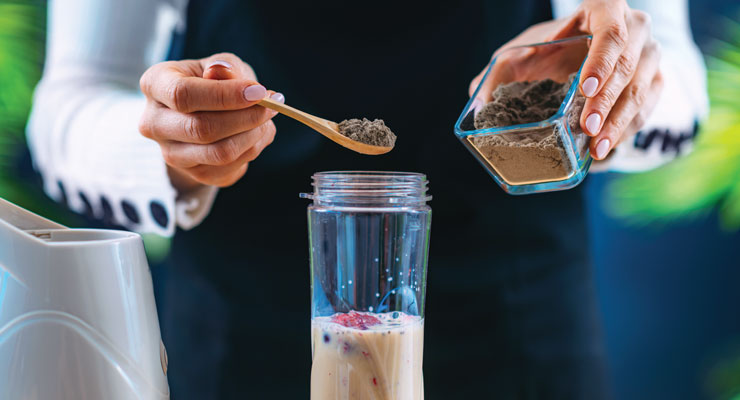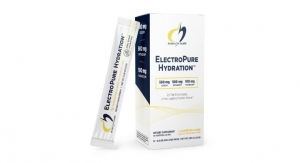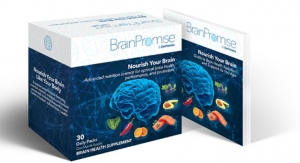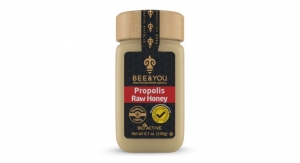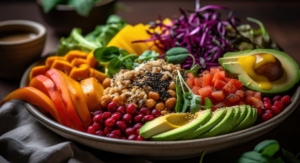By Mike Montemarano, Associate Editor03.03.21
The plant-based movement is, no doubt, one of the most sweeping and quickly-evolving trends within the nutrition market. Innovation taking place with foods, beverages, and supplements containing proteins sourced from plants shows no sign of slowing down.
Cutting back on animal products such as meat, dairy, and seafood, as well as animal-sourced isolates and powders, is often associated with holistic health benefits for the consumer, and benefits to the planet by virtue of their overall reduced impact on greenhouse gas emissions and animal welfare.
Internationally, concerted efforts and investments are being made by nutrition programs, academia, third-party certification groups, and non-governmental organizations to promote the plant-based movement—for a variety of reasons. For example, the global meat supply produces approximately 14.5% of all global greenhouse gas emissions, according to the Food and Agriculture Organization (FAO), though some estimates that include emissions adjacent to meat production put it at 25%.
Conversely, consumers have long gravitated toward diets that afford ample protein intake, due to the association this approach has with weight management strategies, appetite control, energy, muscle mass and strength, and increased metabolism. But the health halo surrounding plant-based dieting is getting brighter. More highly-concentrated plant-based protein foods, beverages, and supplements are reaching the market. And these products are practically devoid of the saturated fats and salt consumed in a typical meat-heavy Western diet, which has become a leading culprit behind record-breaking cardiovascular disease rates, according to several large-scale epidemiological studies.

Beyond Meat and PepsiCo entered a partnership to create plant-based protein beverages and snacks.
Motivations in the Market
A Gallup poll conducted in 2020 found that nearly one in four Americans (23%) reported eating less meat in the past year than they had previously; and 90% of those respondents cited health reasons for doing so. Plant-based substitutions were the second-most-popular method of cutting back on meat, second only to incorporating smaller meat portions into one’s diet.
Still, committing to a fully vegan or vegetarian diet is not especially popular, with only 6% of consumers claiming that they adhere fully to vegetarian diets, and less than 1% saying the same for veganism. Most people are omnivorous, and likely won’t be fully edging out animal-sourced products any time soon.
For the flexitarian crowd, “We’ve also begun to see blended products hit the marketplace,” said Mark Fahlin, business development manager, Cargill. Major companies in beef, chicken, and dairy such as Tyson, Perdue, and more are launching meat products fortified with plant-based proteins which promise a stronger nutritional profile than meat alone.
“For mainstream consumers, hybrid products bring a lot to the table,” said Fahlin. “They can provide an eating experience comparable to their all-animal counterparts, yet still offer many of the benefits of plant-forward nutrition, including fewer calories and less saturated fat.”
At the moment though, fortified beverages, snacks, and bars are the most popular products to be fortified with plant proteins, and many of them are specifically tailored to a variety of needs, according to Jacquelyn Schuh, product marketing director, wholesome nutrition & alternative proteins, ADM. Portable packages, sought-after nutrients like fiber, aligning with diets such as paleo, keto, and gluten-free, and ancient grains, are all proliferating in today’s market.
“[Shoppers] are asking questions like ‘where does my food come from’ and ‘how is it made,’ and they are looking for options that ultimately align with their values,” Fahlin said. “Half of millennials will say they include ethical and environmentally sustainable criteria for eating well. It’s important to us, too, and one of the reasons we partnered with PURIS for our pea protein. Yellow peas are often grown as cover crops, helping farmers reduce soil erosion and naturally return nitrogen to the soil. PURIS has taken the sustainability story one step further, raising and manufacturing 100% of its yellow peas in North America—local sourcing that resonates with consumers.” In addition to reintroducing nitrogen back into the soil, this crop also offers among the highest yields of protein of any crop.
Regardless of the plethora of motivations behind the surging interest in plant-based, Fahlin suggested that, like many other food trends, taste is king in the plant-based proteins arena.
Consumers have little tolerance for earthy notes and other off flavors, or grittier textural attributes in dairy and beverage alternatives, making sourcing and processing for palatability, from farm to finished product, an important part of development. Major players in the plant-based proteins world employ unique and often proprietary strategies to naturally mask off-notes in order to optimize the taste of their respective protein source, sometimes sacrificing a cleaner label to various extents in the process in a kind of balancing act between attractive food attributes.
“There are multiple motivations for the surging interest in plant-based proteins, but health perceptions are certainly a key driver,” said Fahlin, citing an International Food Information Council survey. “Ethical concerns and sustainability also play a role in consumers’ choices. But what makes this all possible is that increasingly, these products taste really good. If we didn’t have that, consumers wouldn’t buy them.”
Melissa Machen, senior technical services manager at Cargill, also noted that plant proteins often bring along earthy notes and other off flavors. “While processing technology has improved solubility, at high usage levels, negative textural attributes like grittiness or sandiness can develop in these products.”
While much of the energy and activity surrounding plant-based protein is coming from startups and specialty nutrition companies, legacy brands have been sending a clear message about their projections that foods which boast plant-based, clean-label, and nutritionally-sound credentials will grow in popularity. PepsiCo, for example, entered into a partnership with Beyond Meat this year to create lines of plant-based protein beverages and snacks. Fast food brands have also wagered on a plant-based future, with Beyond Meat and Impossible Burger products being launched in several national chains, and supermarket shelves are flooding with plant-based alternatives.
2020, a year defined by crisis and isolation, was a huge springboard for the plant-based movement as a whole, according to Schuh. Between those experimenting more in the kitchen over the duration of their quarantines, and an outpouring of interest in nutrition as a means of becoming more resilient, ADM’s research found that “18% of current category buyers bought their first plant-based meat alternative within March and April 2020,” with 92% of those first-time buyers likely to continue seeking plant-based alternatives post-pandemic.
“Ninety percent of global consumers are looking to functional foods and beverages to help improve their health,” Schuh said. “On top of that, consumers are looking more long-term, and are interested in foods and beverages that have ingredients, such as plant proteins, that may help them target specific health goals, even if they are not currently suffering from them.”

Yellow peas are often grown as cover crops, helping farmers reduce soil erosion.
Technology vs. Simplicity
Now a fixture in the mainstream marketplace, plant-based proteins are still experiencing a period largely defined by innovation: formulators are scrambling to develop entirely novel products which don’t have any compromises seen in days past, when the market was dominated by a handful of legacy brands with limited, peripheral assortments of products.
Innovation has brought out consumers’ more exploratory tendencies, according to Angela Aponte, senior account manager and protein brand manager for AIDP. “It has been reported that during the stay-at-home measures, consumers experimented with more food and flavor options as cooking from home increased,” she said. “Many of the plant-based meat alternatives benefitted from these new habits.”
What is causing plant-based proteins to grow? Improvements in flavors and textures, nutritional content (complete vs. incomplete proteins), sustainability and non-GMO processing and sourcing, are all areas that sometimes present challenges compared to standard proteins.
“Versatility can be limited for plant-based proteins,” according to Kristine Polley, PhD, nutrition scientist, and Karma James, PhD, food scientist at Standard Process, Inc. “There is much more that can be done with animal protein and/or dairy, versus plant protein. The percentage of protein in plant foods is much lower compared to animal protein and therefore individuals must consume higher amounts of plants.” Flavor and texture can also be hard to work with for plant-based proteins.
Additionally, “The cost of plant-based proteins tends to be higher due to challenges in processing to obtain the highest possible protein content,” they noted. “Plant-based proteins are also very nuanced and novel, and require newer technologies, contributing to the increased cost. Dairy and animal proteins are better established.”
Nevertheless, protein is being added to products that traditionally weren’t part of the conversation, such as chips, crackers, and sauces. “There have been so many great changes in taste and texture in the last few years,” Aponte said. “Consumers are noticing the improvements. Process changes that are as simple as precise venting and timing yield a cleaner and more mild tasting protein.”
Later generations of plant-based proteins will face pressure to merge the best of both worlds, relying on food technology to offer novel experiences while satisfying consumer demand for shorter, comprehensible ingredient lists, no longer sacrificing clean-label perks for functionality, or vice-versa.

The Possible Bar from Standard Process was formulated for high-intensity endurance athletes.
More Sources, More to Do with Them
When looking at foods on the whole, consumers are most likely to regularly source their plant-based protein from nuts, beans, lentils, seeds, quinoa, and soy, which is intuitive since in their natural forms these ingredients have the highest protein density.
“The market continues to grow and with that growth we see a diversification in the types of proteins,” Aponte said. “Rice and pea have been the mainstays, but we are getting many requests for unique items such as chickpea, fava bean, and mung bean. Consumers are still interested in the new and innovative options. In the next few years, you will see the number of plant proteins expand, as demand for plant protein grows.”
Part of that diversification also has to do with the fact that some plant sources have a greater environmental benefit than others—especially when it comes to preserving biodiversity in certain regions. This was part of AIDP’s motivation to bring to market products featuring mung bean. “Mung bean is one of the more complete plant proteins, which aids digestion and is high in antioxidants, and minerals, which makes it a great option,” Aponte said. “There are a wide variety of plant proteins which can be grown in numerous types of conditions. AIDP offers RisaPro, PeasiPro, pumpkin seed, hemp, and many other plant proteins, most of which are available in organic forms.”
When it comes to more concentrated ingredients seen in traditional supplement formats, soy protein isolate is still widely popular due to its “complete” protein structure which contains all nine essential amino acids at a reasonable price point, outpacing its nearest competitors by several fold.
However, like dairy, some consumers and researchers alike have concerns about the effect certain soy compounds have on health, according to Polley and James at Standard Process. Phytoestrogens present in soy are posited by some researchers to exhibit certain estrogenic or anti-estrogenic effects on a person’s hormones, however, further clinical substantiation and research into the role genetics might play on health effects of soy must be done in order to verify these concerns.
Between tolerability concerns, health aspirations and a preference for diverse protein sources, innovators are branching out to formulations with plenty of other plants that offer similar complete proteins with novel tastes and textures, including nuts, peas, lentils, quinoa, brown rice, spirulina, chia seeds, hemp, and plenty more.
ADM is one company seeking out highly specific textures to replicate the gold standard sensory experiences offered by meat, in order to appeal to the flexitarian core of plant protein consumers. These include analogs for shredded meat, crumbles, grounds, and more for a plethora of recipes, so that texture matches the ever-important umami.
“Developing plant-based convenient formats like shredded and pulled meats and crumbles and grounds allows plant protein consumers to create customized enjoyable plant-forward eating experiences at different times during the day,” Schuh said. “In the U.S., 41% of plant protein consumers are interested in trying alternative shredded and pulled meats, and 39% are interested in trying alternative crumbles and grounds. The heightened curiosity of these formats demonstrates consumer desires to include plant-based applications in convenient meals like stir fries, hand-held items like sandwiches and tacos and in on-the-go offerings. Having plant-based convenient formats readily available will help propel the next generation of growth in alternative applications and bring about innovative formats.”
An important metric for manufacturers to take into account is the PDCAAS (Protein Digestibility Corrected Amino Acid Score), which takes into account not only how complete a protein is, but its bioavailability, which effects muscle recovery and synthesis of new proteins in the body.
A common way to achieve a higher PDCAAS that is gaining popularity among manufacturers is to blend complementary sources together. “Plant proteins are sometimes limited on specific amino acids, depending on the botanical source,” said Machen at Cargill. “Protein sources such as beans, peas, rice, and potato are considered limiting proteins; however, they can be blended with complementary proteins to create a complete protein source. Pea protein, in particular, is another good protein source. The PURIS pea protein product contains at least 80% total protein, which enables developers to formulate at much higher levels than most other plant protein options. Pea protein also has a high PDCASS score of 0.8 (80%). (For comparison, the PDCASS for chickpea is 0.6, fava bean is 0.6 and oat is 0.67.) As a result, it’s relatively easy for formulators to make a complete protein claim by blending pea protein with a complementary protein source like rice. It’s even possible to add extra pea protein to achieve the target protein claim.”
Consumers who are growing more savvy about the advantages of blending protein sources are already actively seeking such formulations, Schuh said.
“Curated plant protein blends in foods and beverages offer a customized approach to solve consumer nutritional goals and meet taste and texture expectations. Our research shows that 83% of U.S. flexitarians review labels. Plus, we find that 68% of flexitarians prefer a blend of two or more plant proteins in meat alternatives, and 52% prefer the blend in dairy alternatives.”
Plant protein blends can achieve a desired label packed with dietary diversity and recognizable ingredients. Schuh added. “Our newly introduced Arcon T textured pea protein delivers on the consumer demand for plant protein diversity through its two forms—a blend of pea protein and chickpeas and a blend of pea protein with navy beans. Moreover, protein nutrition solutions that use a combination of plant protein with complementary amino acid profiles may have an enhanced Protein Digestibility Corrected Amino Acid Score.”
During this early phase of innovation, experts indicate there is a bifurcation: while certain consumers demand products that are more clean-label and whole-foods based, many plant proteins have an undesirable gritty texture and an earthy, bitter aftertaste that is unappealing.
But flavor and texture maskers detract from the clean label, said Kurt Waananen, PhD, R&D director for Blue Diamond Growers. The legacy almond brand launched its first almond-based protein powder and protein supplement ingredient in 2018, promising to deliver one of the most versatile sources of plant-based protein in terms of texture and flavor, with a low caloric content and high concentration of fiber. Its inherent flavor-masking properties have made almond protein an important building block for protein and nutritional bars, Waananen said.
Others are highly receptive to food technology which can optimize the content of protein and other nutrients, such as plant-sourced isolates, concentrates, flours, and powders which can be compared to more traditional animal-sourced options. The fragmented needs of a diverse group of alternative protein consumers has so far resulted in a diverse range of attributes and intended benefits seeing appeal.
Waananen said that certain ingredients such as almond protein are more ideal for pairings to achieve specific protein targets as well, as a “neutral base on which to build a desired flavor profile. It adds protein while providing flavor masking, fiber, and strong front-of-label benefits.”
In the plant-based sports nutrition sector, many formulators are taking multi-source protein supplements to further extents and fortifying products with several other micronutrients, to provide athletic consumers holistic benefits more farsighted than those offered by protein alone. This approach is informed by the fact that all forms of exercise, whether aerobic, anaerobic, or some combination of the two, take a greater toll on the body than merely breaking down proteins.
The Possible Bar, recently launched by Standard Process, is an example of this trend. It was formulated specifically for high-intensity endurance athletes. The product incorporates a high carbohydrate to protein ratio, countering the narrative that protein supplements ought to focus on the macronutrient alone. In a calorically-dense package, it contains high amounts of B vitamins, 20 grams of plant-based protein, zinc, and omega-3s—all within one bar which has a 3:1 carbohydrates to protein ratio. Achieving potent antioxidant activity within the same formula was also important to Standard Process, so the company incorporated both nuts, seeds, and berries, as well as two of its branded supplement ingredients, Cellular Vitality and OPC Synergy, into the bar.
“Physically active individuals have an increased rate of energy utilization, which can favor increased reactive oxygen species, and thus compromise antioxidant defense systems within the body,” Polley and James said. That high carbohydrate ratio is recommended by the International Society of Sports Nutrition for recovery and replenishment of muscle glycogen that is used during endurance exercise.
“The Possible Bar is designed for elite athletes and adventurers participating in high intensity activity for 2-plus hours per day who cannot meet their energy needs through diet alone,” they said. Lastly, the bar was formulated with 9 grams of whole food fiber to address compromises in digestive health athletes experience from heavy training.
AIDP has observed similar trends in consumers valuing lower protein density options if the nutritional vacuum is filled with other functional ingredients and macros.
“Total protein content is also a key driver, but we are seeing a shift here,” Aponte said. “Consumers seem to be accepting of lower levels of protein in mainstream products vs. using high amounts from scoops. Evolving planting and processing methods give the consumer more palatable and appealing plant options. These methods increased availability to mass market and created more diverse and savvy consumers.”
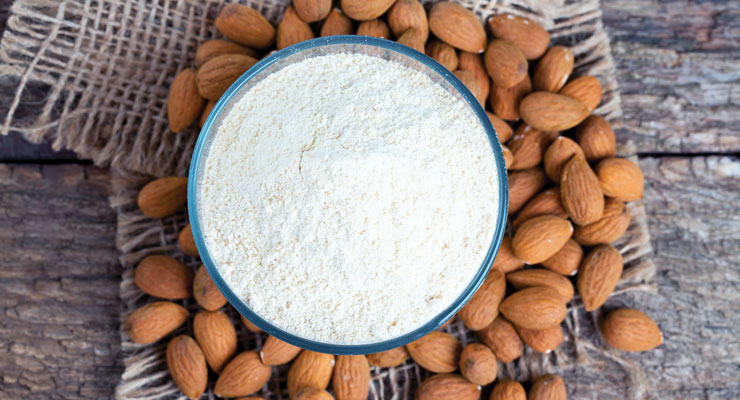
Almonds represent a versatile source of plant-based protein in terms of texture and flavor.
The Fermentation Phenomenon
Keen observers in the alternative protein space are keeping an eye on proteins that are not sourced from plants at all. While the group is sparse at this time, there are a number of companies whose products have reached the market which contain proteins entirely sourced through fermentation. Thinking beyond the use of fermentation in place of protein hydrolysis, new fermentation practices rely on “yeast machinery,” which allows highly specific protein structures to be organically synthesized in vitro to match that of animal products. Fermented replications of eggs, dairy, and more have already become available.
“It’s a fermentation process that uses genetic coding to get yeast to produce an end product with the protein type that they’re looking for, and several are on the market today,” Julie Mann, global protein program manager at Ingredion said during an IFTNext podcast. “There’s work being done on dairy protein, egg protein, and others across the board, even going beyond food with fermented collagen, which can be used for beauty products.”
Fermented versions of protein powders are also being launched. Recently, Israeli company NextFerm launched its first official vegan protein powder, ProteVin, that promises to be a suitable replacement to whey, soy, or pea and rice protein blends. Thanks to a new fermentation technology, the company has created a fermented protein powder that is vegan, hypoallergenic, completely pure, and is a highly-digestible analog of whey protein powder with an extremely similar taste and texture to whey. With a greater protein concentration than other vegan counterparts, NextFerm suggests that fermented proteins are the most competitive alternative to isolated animal protein.
Even certain algae cofactors, such as the antioxidant astaxanthin, are commercially available in fermented versions, suggesting that novel yeast gene coding will be the path to many breakthroughs in the future. “Fermentation is not new; it’s a very well-known, old-world science being applied in a brand new way,” Mann said.
Sustained entirely by microorganisms, these proteins have plenty of benefits, including the added presence of probiotic ingredients which support gut health, and the fact that they are vegan, gluten-free, and non-allergenic. Fermenting proteins requires little source material, and creates its own circular supply chain, making ingredients in this category both cost-effective and devoid of any significant environmental footprint.
Fermentation doesn’t necessarily have to be the source of alternative proteins, however. More often, it’s used to enhance the bioactivity, aroma, taste, and texture of protein products, utilizing technology much more efficient and targeted than predecessors such as tempeh.
“While fermentation has been used for centuries to improve or preserve food products, it has most recently been found to have the potential to enhance the flavor, nutrition, and performance of plant proteins,” said Dina Fernandez, global director, protein nutrition solutions, ADM. “Fermentation may help solve some of the flavor, aroma, texture, and other sensory experience challenges that are associated with using plant protein in dairy and meat alternatives and other specialized nutrition foods and beverages.”
“Plus, as health and wellness concerns grow, consumers already associate fermented protein solutions with being close-to-nature, along with balanced and wholesome nutrition and natural, simple food preparation,” she added.
Cultured Meat: Just Around the Corner
Emerging companies are also stirring up discussion surrounding a new type of meat, produced in vitro by culturing cells. While there is still plenty to be done to culture meat at an affordable price point, the novelty of having actual meat that was produced in a way devoid of animal suffering or burden on the environment is already stirring up interest and philosophical discussions as a paradoxically vegan product with the organic identity of meat.
“There are several startups on cell-based seafoods, and all of them are using unique technologies. Excitement surrounding alternative proteins on the whole is fueling the excitement for this marketplace,” Lou Cooperhouse, president and CEO of BlueNalu, a cell-based seafood company seeking to grow fish in laboratory settings that is equivalent to fresh-caught fish, said during an IFTNext Podcast interview.
“Our seafood supply is diminishing and vulnerable, which is why seafood prices are so volatile,” Cooperhouse said. Scaling up a supply of lab-grown seafood will create a “third leg” in the global supply chain, he said, ensuring not only stability in seafood market pricing, but a new supply chain which faces no trade-offs related to ecology, environmental pollutants such as methylmercury, or animal suffering. At this point in time, Cooperhouse suggested it is no longer a matter of if, but when cell-based replicas of animal products will be fully embraced.
“This rolls over into poultry, beef, leather, fat, and niche markets like foie gras,” he said. “We still need to develop the biology, the engineering, and the sensory experiences that are to be expected, but it can be done and it will be done.”
Luckily, for those on the ground floor, Cooperhouse said that both the FDA and USDA have been proactive in their discussion on regulating this new kind of product. He anticipated that cultured protein companies will be able to follow most of the same regulatory pathways as traditional food manufacturers, in the realms of safety and labeling standards, allowing companies to focus on the burden of the unique challenges they face with this new technology.
Mike Montemarano has been the Associate Editor of Nutraceuticals World since February 2020. He can be reached at MMontemarano@RodmanMedia.com.
Cutting back on animal products such as meat, dairy, and seafood, as well as animal-sourced isolates and powders, is often associated with holistic health benefits for the consumer, and benefits to the planet by virtue of their overall reduced impact on greenhouse gas emissions and animal welfare.
Internationally, concerted efforts and investments are being made by nutrition programs, academia, third-party certification groups, and non-governmental organizations to promote the plant-based movement—for a variety of reasons. For example, the global meat supply produces approximately 14.5% of all global greenhouse gas emissions, according to the Food and Agriculture Organization (FAO), though some estimates that include emissions adjacent to meat production put it at 25%.
Conversely, consumers have long gravitated toward diets that afford ample protein intake, due to the association this approach has with weight management strategies, appetite control, energy, muscle mass and strength, and increased metabolism. But the health halo surrounding plant-based dieting is getting brighter. More highly-concentrated plant-based protein foods, beverages, and supplements are reaching the market. And these products are practically devoid of the saturated fats and salt consumed in a typical meat-heavy Western diet, which has become a leading culprit behind record-breaking cardiovascular disease rates, according to several large-scale epidemiological studies.

Beyond Meat and PepsiCo entered a partnership to create plant-based protein beverages and snacks.
Motivations in the Market
A Gallup poll conducted in 2020 found that nearly one in four Americans (23%) reported eating less meat in the past year than they had previously; and 90% of those respondents cited health reasons for doing so. Plant-based substitutions were the second-most-popular method of cutting back on meat, second only to incorporating smaller meat portions into one’s diet.
Still, committing to a fully vegan or vegetarian diet is not especially popular, with only 6% of consumers claiming that they adhere fully to vegetarian diets, and less than 1% saying the same for veganism. Most people are omnivorous, and likely won’t be fully edging out animal-sourced products any time soon.
For the flexitarian crowd, “We’ve also begun to see blended products hit the marketplace,” said Mark Fahlin, business development manager, Cargill. Major companies in beef, chicken, and dairy such as Tyson, Perdue, and more are launching meat products fortified with plant-based proteins which promise a stronger nutritional profile than meat alone.
“For mainstream consumers, hybrid products bring a lot to the table,” said Fahlin. “They can provide an eating experience comparable to their all-animal counterparts, yet still offer many of the benefits of plant-forward nutrition, including fewer calories and less saturated fat.”
At the moment though, fortified beverages, snacks, and bars are the most popular products to be fortified with plant proteins, and many of them are specifically tailored to a variety of needs, according to Jacquelyn Schuh, product marketing director, wholesome nutrition & alternative proteins, ADM. Portable packages, sought-after nutrients like fiber, aligning with diets such as paleo, keto, and gluten-free, and ancient grains, are all proliferating in today’s market.
“[Shoppers] are asking questions like ‘where does my food come from’ and ‘how is it made,’ and they are looking for options that ultimately align with their values,” Fahlin said. “Half of millennials will say they include ethical and environmentally sustainable criteria for eating well. It’s important to us, too, and one of the reasons we partnered with PURIS for our pea protein. Yellow peas are often grown as cover crops, helping farmers reduce soil erosion and naturally return nitrogen to the soil. PURIS has taken the sustainability story one step further, raising and manufacturing 100% of its yellow peas in North America—local sourcing that resonates with consumers.” In addition to reintroducing nitrogen back into the soil, this crop also offers among the highest yields of protein of any crop.
Regardless of the plethora of motivations behind the surging interest in plant-based, Fahlin suggested that, like many other food trends, taste is king in the plant-based proteins arena.
Consumers have little tolerance for earthy notes and other off flavors, or grittier textural attributes in dairy and beverage alternatives, making sourcing and processing for palatability, from farm to finished product, an important part of development. Major players in the plant-based proteins world employ unique and often proprietary strategies to naturally mask off-notes in order to optimize the taste of their respective protein source, sometimes sacrificing a cleaner label to various extents in the process in a kind of balancing act between attractive food attributes.
“There are multiple motivations for the surging interest in plant-based proteins, but health perceptions are certainly a key driver,” said Fahlin, citing an International Food Information Council survey. “Ethical concerns and sustainability also play a role in consumers’ choices. But what makes this all possible is that increasingly, these products taste really good. If we didn’t have that, consumers wouldn’t buy them.”
Melissa Machen, senior technical services manager at Cargill, also noted that plant proteins often bring along earthy notes and other off flavors. “While processing technology has improved solubility, at high usage levels, negative textural attributes like grittiness or sandiness can develop in these products.”
While much of the energy and activity surrounding plant-based protein is coming from startups and specialty nutrition companies, legacy brands have been sending a clear message about their projections that foods which boast plant-based, clean-label, and nutritionally-sound credentials will grow in popularity. PepsiCo, for example, entered into a partnership with Beyond Meat this year to create lines of plant-based protein beverages and snacks. Fast food brands have also wagered on a plant-based future, with Beyond Meat and Impossible Burger products being launched in several national chains, and supermarket shelves are flooding with plant-based alternatives.
2020, a year defined by crisis and isolation, was a huge springboard for the plant-based movement as a whole, according to Schuh. Between those experimenting more in the kitchen over the duration of their quarantines, and an outpouring of interest in nutrition as a means of becoming more resilient, ADM’s research found that “18% of current category buyers bought their first plant-based meat alternative within March and April 2020,” with 92% of those first-time buyers likely to continue seeking plant-based alternatives post-pandemic.
“Ninety percent of global consumers are looking to functional foods and beverages to help improve their health,” Schuh said. “On top of that, consumers are looking more long-term, and are interested in foods and beverages that have ingredients, such as plant proteins, that may help them target specific health goals, even if they are not currently suffering from them.”

Yellow peas are often grown as cover crops, helping farmers reduce soil erosion.
Technology vs. Simplicity
Now a fixture in the mainstream marketplace, plant-based proteins are still experiencing a period largely defined by innovation: formulators are scrambling to develop entirely novel products which don’t have any compromises seen in days past, when the market was dominated by a handful of legacy brands with limited, peripheral assortments of products.
Innovation has brought out consumers’ more exploratory tendencies, according to Angela Aponte, senior account manager and protein brand manager for AIDP. “It has been reported that during the stay-at-home measures, consumers experimented with more food and flavor options as cooking from home increased,” she said. “Many of the plant-based meat alternatives benefitted from these new habits.”
What is causing plant-based proteins to grow? Improvements in flavors and textures, nutritional content (complete vs. incomplete proteins), sustainability and non-GMO processing and sourcing, are all areas that sometimes present challenges compared to standard proteins.
“Versatility can be limited for plant-based proteins,” according to Kristine Polley, PhD, nutrition scientist, and Karma James, PhD, food scientist at Standard Process, Inc. “There is much more that can be done with animal protein and/or dairy, versus plant protein. The percentage of protein in plant foods is much lower compared to animal protein and therefore individuals must consume higher amounts of plants.” Flavor and texture can also be hard to work with for plant-based proteins.
Additionally, “The cost of plant-based proteins tends to be higher due to challenges in processing to obtain the highest possible protein content,” they noted. “Plant-based proteins are also very nuanced and novel, and require newer technologies, contributing to the increased cost. Dairy and animal proteins are better established.”
Nevertheless, protein is being added to products that traditionally weren’t part of the conversation, such as chips, crackers, and sauces. “There have been so many great changes in taste and texture in the last few years,” Aponte said. “Consumers are noticing the improvements. Process changes that are as simple as precise venting and timing yield a cleaner and more mild tasting protein.”
Later generations of plant-based proteins will face pressure to merge the best of both worlds, relying on food technology to offer novel experiences while satisfying consumer demand for shorter, comprehensible ingredient lists, no longer sacrificing clean-label perks for functionality, or vice-versa.

The Possible Bar from Standard Process was formulated for high-intensity endurance athletes.
More Sources, More to Do with Them
When looking at foods on the whole, consumers are most likely to regularly source their plant-based protein from nuts, beans, lentils, seeds, quinoa, and soy, which is intuitive since in their natural forms these ingredients have the highest protein density.
“The market continues to grow and with that growth we see a diversification in the types of proteins,” Aponte said. “Rice and pea have been the mainstays, but we are getting many requests for unique items such as chickpea, fava bean, and mung bean. Consumers are still interested in the new and innovative options. In the next few years, you will see the number of plant proteins expand, as demand for plant protein grows.”
Part of that diversification also has to do with the fact that some plant sources have a greater environmental benefit than others—especially when it comes to preserving biodiversity in certain regions. This was part of AIDP’s motivation to bring to market products featuring mung bean. “Mung bean is one of the more complete plant proteins, which aids digestion and is high in antioxidants, and minerals, which makes it a great option,” Aponte said. “There are a wide variety of plant proteins which can be grown in numerous types of conditions. AIDP offers RisaPro, PeasiPro, pumpkin seed, hemp, and many other plant proteins, most of which are available in organic forms.”
When it comes to more concentrated ingredients seen in traditional supplement formats, soy protein isolate is still widely popular due to its “complete” protein structure which contains all nine essential amino acids at a reasonable price point, outpacing its nearest competitors by several fold.
However, like dairy, some consumers and researchers alike have concerns about the effect certain soy compounds have on health, according to Polley and James at Standard Process. Phytoestrogens present in soy are posited by some researchers to exhibit certain estrogenic or anti-estrogenic effects on a person’s hormones, however, further clinical substantiation and research into the role genetics might play on health effects of soy must be done in order to verify these concerns.
Between tolerability concerns, health aspirations and a preference for diverse protein sources, innovators are branching out to formulations with plenty of other plants that offer similar complete proteins with novel tastes and textures, including nuts, peas, lentils, quinoa, brown rice, spirulina, chia seeds, hemp, and plenty more.
ADM is one company seeking out highly specific textures to replicate the gold standard sensory experiences offered by meat, in order to appeal to the flexitarian core of plant protein consumers. These include analogs for shredded meat, crumbles, grounds, and more for a plethora of recipes, so that texture matches the ever-important umami.
“Developing plant-based convenient formats like shredded and pulled meats and crumbles and grounds allows plant protein consumers to create customized enjoyable plant-forward eating experiences at different times during the day,” Schuh said. “In the U.S., 41% of plant protein consumers are interested in trying alternative shredded and pulled meats, and 39% are interested in trying alternative crumbles and grounds. The heightened curiosity of these formats demonstrates consumer desires to include plant-based applications in convenient meals like stir fries, hand-held items like sandwiches and tacos and in on-the-go offerings. Having plant-based convenient formats readily available will help propel the next generation of growth in alternative applications and bring about innovative formats.”
An important metric for manufacturers to take into account is the PDCAAS (Protein Digestibility Corrected Amino Acid Score), which takes into account not only how complete a protein is, but its bioavailability, which effects muscle recovery and synthesis of new proteins in the body.
A common way to achieve a higher PDCAAS that is gaining popularity among manufacturers is to blend complementary sources together. “Plant proteins are sometimes limited on specific amino acids, depending on the botanical source,” said Machen at Cargill. “Protein sources such as beans, peas, rice, and potato are considered limiting proteins; however, they can be blended with complementary proteins to create a complete protein source. Pea protein, in particular, is another good protein source. The PURIS pea protein product contains at least 80% total protein, which enables developers to formulate at much higher levels than most other plant protein options. Pea protein also has a high PDCASS score of 0.8 (80%). (For comparison, the PDCASS for chickpea is 0.6, fava bean is 0.6 and oat is 0.67.) As a result, it’s relatively easy for formulators to make a complete protein claim by blending pea protein with a complementary protein source like rice. It’s even possible to add extra pea protein to achieve the target protein claim.”
Consumers who are growing more savvy about the advantages of blending protein sources are already actively seeking such formulations, Schuh said.
“Curated plant protein blends in foods and beverages offer a customized approach to solve consumer nutritional goals and meet taste and texture expectations. Our research shows that 83% of U.S. flexitarians review labels. Plus, we find that 68% of flexitarians prefer a blend of two or more plant proteins in meat alternatives, and 52% prefer the blend in dairy alternatives.”
Plant protein blends can achieve a desired label packed with dietary diversity and recognizable ingredients. Schuh added. “Our newly introduced Arcon T textured pea protein delivers on the consumer demand for plant protein diversity through its two forms—a blend of pea protein and chickpeas and a blend of pea protein with navy beans. Moreover, protein nutrition solutions that use a combination of plant protein with complementary amino acid profiles may have an enhanced Protein Digestibility Corrected Amino Acid Score.”
During this early phase of innovation, experts indicate there is a bifurcation: while certain consumers demand products that are more clean-label and whole-foods based, many plant proteins have an undesirable gritty texture and an earthy, bitter aftertaste that is unappealing.
But flavor and texture maskers detract from the clean label, said Kurt Waananen, PhD, R&D director for Blue Diamond Growers. The legacy almond brand launched its first almond-based protein powder and protein supplement ingredient in 2018, promising to deliver one of the most versatile sources of plant-based protein in terms of texture and flavor, with a low caloric content and high concentration of fiber. Its inherent flavor-masking properties have made almond protein an important building block for protein and nutritional bars, Waananen said.
Others are highly receptive to food technology which can optimize the content of protein and other nutrients, such as plant-sourced isolates, concentrates, flours, and powders which can be compared to more traditional animal-sourced options. The fragmented needs of a diverse group of alternative protein consumers has so far resulted in a diverse range of attributes and intended benefits seeing appeal.
Waananen said that certain ingredients such as almond protein are more ideal for pairings to achieve specific protein targets as well, as a “neutral base on which to build a desired flavor profile. It adds protein while providing flavor masking, fiber, and strong front-of-label benefits.”
In the plant-based sports nutrition sector, many formulators are taking multi-source protein supplements to further extents and fortifying products with several other micronutrients, to provide athletic consumers holistic benefits more farsighted than those offered by protein alone. This approach is informed by the fact that all forms of exercise, whether aerobic, anaerobic, or some combination of the two, take a greater toll on the body than merely breaking down proteins.
The Possible Bar, recently launched by Standard Process, is an example of this trend. It was formulated specifically for high-intensity endurance athletes. The product incorporates a high carbohydrate to protein ratio, countering the narrative that protein supplements ought to focus on the macronutrient alone. In a calorically-dense package, it contains high amounts of B vitamins, 20 grams of plant-based protein, zinc, and omega-3s—all within one bar which has a 3:1 carbohydrates to protein ratio. Achieving potent antioxidant activity within the same formula was also important to Standard Process, so the company incorporated both nuts, seeds, and berries, as well as two of its branded supplement ingredients, Cellular Vitality and OPC Synergy, into the bar.
“Physically active individuals have an increased rate of energy utilization, which can favor increased reactive oxygen species, and thus compromise antioxidant defense systems within the body,” Polley and James said. That high carbohydrate ratio is recommended by the International Society of Sports Nutrition for recovery and replenishment of muscle glycogen that is used during endurance exercise.
“The Possible Bar is designed for elite athletes and adventurers participating in high intensity activity for 2-plus hours per day who cannot meet their energy needs through diet alone,” they said. Lastly, the bar was formulated with 9 grams of whole food fiber to address compromises in digestive health athletes experience from heavy training.
AIDP has observed similar trends in consumers valuing lower protein density options if the nutritional vacuum is filled with other functional ingredients and macros.
“Total protein content is also a key driver, but we are seeing a shift here,” Aponte said. “Consumers seem to be accepting of lower levels of protein in mainstream products vs. using high amounts from scoops. Evolving planting and processing methods give the consumer more palatable and appealing plant options. These methods increased availability to mass market and created more diverse and savvy consumers.”

Almonds represent a versatile source of plant-based protein in terms of texture and flavor.
The Fermentation Phenomenon
Keen observers in the alternative protein space are keeping an eye on proteins that are not sourced from plants at all. While the group is sparse at this time, there are a number of companies whose products have reached the market which contain proteins entirely sourced through fermentation. Thinking beyond the use of fermentation in place of protein hydrolysis, new fermentation practices rely on “yeast machinery,” which allows highly specific protein structures to be organically synthesized in vitro to match that of animal products. Fermented replications of eggs, dairy, and more have already become available.
“It’s a fermentation process that uses genetic coding to get yeast to produce an end product with the protein type that they’re looking for, and several are on the market today,” Julie Mann, global protein program manager at Ingredion said during an IFTNext podcast. “There’s work being done on dairy protein, egg protein, and others across the board, even going beyond food with fermented collagen, which can be used for beauty products.”
Fermented versions of protein powders are also being launched. Recently, Israeli company NextFerm launched its first official vegan protein powder, ProteVin, that promises to be a suitable replacement to whey, soy, or pea and rice protein blends. Thanks to a new fermentation technology, the company has created a fermented protein powder that is vegan, hypoallergenic, completely pure, and is a highly-digestible analog of whey protein powder with an extremely similar taste and texture to whey. With a greater protein concentration than other vegan counterparts, NextFerm suggests that fermented proteins are the most competitive alternative to isolated animal protein.
Even certain algae cofactors, such as the antioxidant astaxanthin, are commercially available in fermented versions, suggesting that novel yeast gene coding will be the path to many breakthroughs in the future. “Fermentation is not new; it’s a very well-known, old-world science being applied in a brand new way,” Mann said.
Sustained entirely by microorganisms, these proteins have plenty of benefits, including the added presence of probiotic ingredients which support gut health, and the fact that they are vegan, gluten-free, and non-allergenic. Fermenting proteins requires little source material, and creates its own circular supply chain, making ingredients in this category both cost-effective and devoid of any significant environmental footprint.
Fermentation doesn’t necessarily have to be the source of alternative proteins, however. More often, it’s used to enhance the bioactivity, aroma, taste, and texture of protein products, utilizing technology much more efficient and targeted than predecessors such as tempeh.
“While fermentation has been used for centuries to improve or preserve food products, it has most recently been found to have the potential to enhance the flavor, nutrition, and performance of plant proteins,” said Dina Fernandez, global director, protein nutrition solutions, ADM. “Fermentation may help solve some of the flavor, aroma, texture, and other sensory experience challenges that are associated with using plant protein in dairy and meat alternatives and other specialized nutrition foods and beverages.”
“Plus, as health and wellness concerns grow, consumers already associate fermented protein solutions with being close-to-nature, along with balanced and wholesome nutrition and natural, simple food preparation,” she added.
Cultured Meat: Just Around the Corner
Emerging companies are also stirring up discussion surrounding a new type of meat, produced in vitro by culturing cells. While there is still plenty to be done to culture meat at an affordable price point, the novelty of having actual meat that was produced in a way devoid of animal suffering or burden on the environment is already stirring up interest and philosophical discussions as a paradoxically vegan product with the organic identity of meat.
“There are several startups on cell-based seafoods, and all of them are using unique technologies. Excitement surrounding alternative proteins on the whole is fueling the excitement for this marketplace,” Lou Cooperhouse, president and CEO of BlueNalu, a cell-based seafood company seeking to grow fish in laboratory settings that is equivalent to fresh-caught fish, said during an IFTNext Podcast interview.
“Our seafood supply is diminishing and vulnerable, which is why seafood prices are so volatile,” Cooperhouse said. Scaling up a supply of lab-grown seafood will create a “third leg” in the global supply chain, he said, ensuring not only stability in seafood market pricing, but a new supply chain which faces no trade-offs related to ecology, environmental pollutants such as methylmercury, or animal suffering. At this point in time, Cooperhouse suggested it is no longer a matter of if, but when cell-based replicas of animal products will be fully embraced.
“This rolls over into poultry, beef, leather, fat, and niche markets like foie gras,” he said. “We still need to develop the biology, the engineering, and the sensory experiences that are to be expected, but it can be done and it will be done.”
Luckily, for those on the ground floor, Cooperhouse said that both the FDA and USDA have been proactive in their discussion on regulating this new kind of product. He anticipated that cultured protein companies will be able to follow most of the same regulatory pathways as traditional food manufacturers, in the realms of safety and labeling standards, allowing companies to focus on the burden of the unique challenges they face with this new technology.
Mike Montemarano has been the Associate Editor of Nutraceuticals World since February 2020. He can be reached at MMontemarano@RodmanMedia.com.

